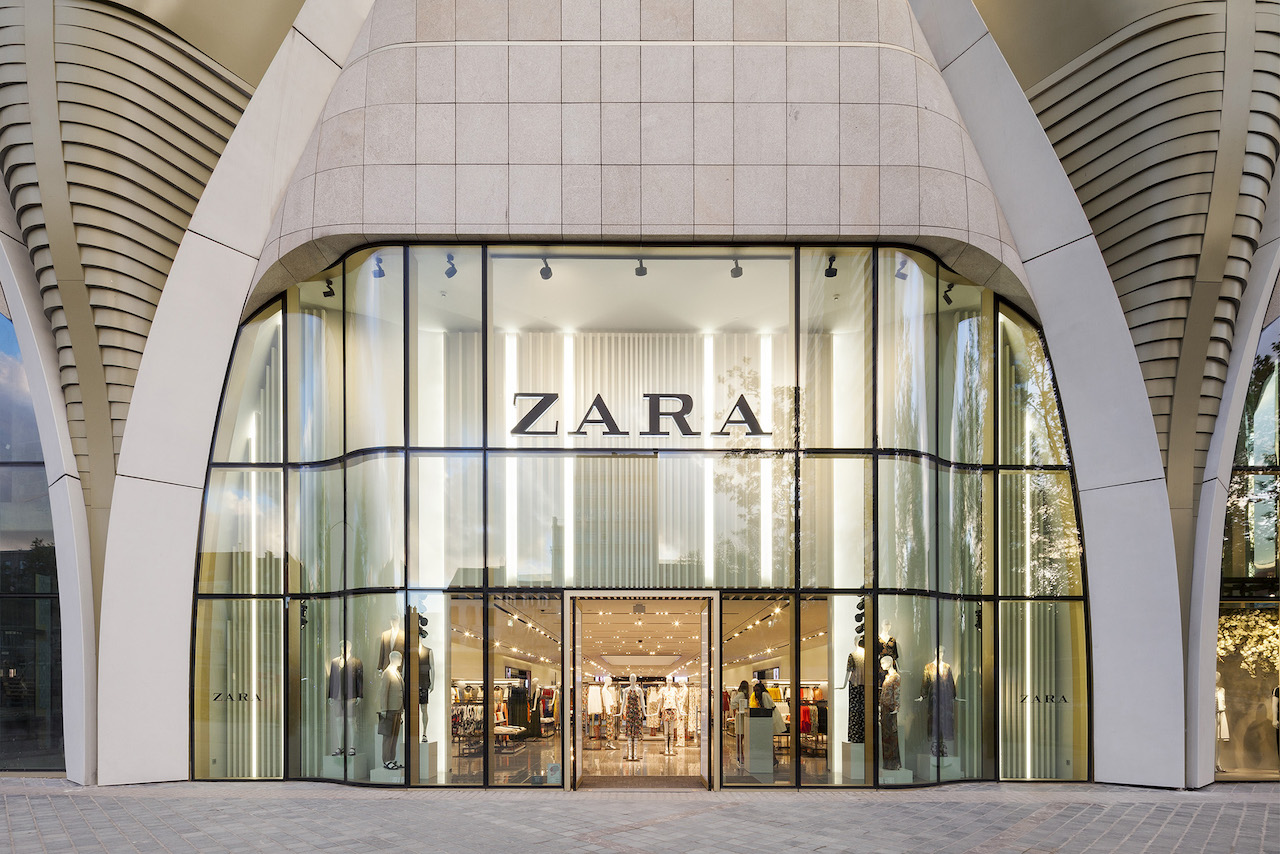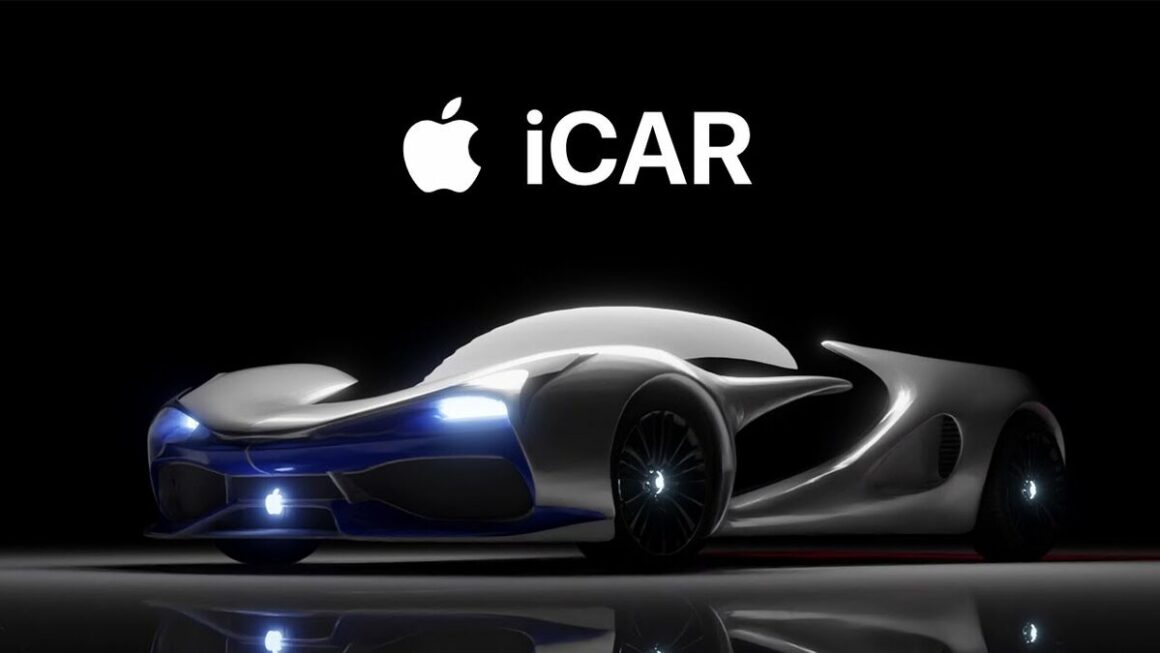Zara is a Spanish multinational clothing retailer that was founded in 1975 by Amancio Ortega. It is the flagship chain store of the Inditex group, the world’s largest apparel retailer. Zara operates over 2,220 stores and is present in 88 countries. In this article, we’ll introduce the Marketing Strategies, Marketing Mix and STP Analysis of Fast Forward retailer, Zara.
Zara is known for its fast fashion business model, which allows it to quickly adapt to changing fashion trends. The company has a very short design-to-production cycle, which means that new designs can be in stores within a few weeks of being created. This allows Zara to offer trendy clothes at a relatively affordable price.
Zara’s success has been attributed to a number of factors, including its focus on customer demand, its vertically integrated supply chain, and its use of technology. The company is constantly monitoring customer feedback and using this information to inform its design decisions. Zara’s supply chain is also very efficient, which allows it to keep costs down. The company uses technology to track inventory levels and to optimize its production process.
Zara has been criticized for its environmental impact. The company has been accused of using sweatshop labor and of producing clothes that are not durable. However, Zara has taken steps to address these concerns. The company has implemented a number of sustainability initiatives, such as using recycled materials and reducing its water usage.
Overall, Zara is a successful fashion retailer that has been able to adapt to the changing needs of its customers. The company’s fast fashion business model has allowed it to offer trendy clothes at a relatively affordable price. Zara is also a leader in the use of technology, which has helped it to improve its efficiency and to stay ahead of the competition.
Here are some additional facts about Zara:
- The company’s name was originally Zorba, but it was changed to Zara after Amancio Ortega learned that there was already a bar with the same name in A Coruña.
- Zara’s first store was located in A Coruña, Spain.
- The company’s logo is a white oval with the word “ZARA” written in black letters.
- Zara’s parent company, Inditex, is the world’s largest apparel retailer.
- Zara has over 2,200 stores and over 500 Zara Home stores in 88 countries.
- The company’s annual revenue is over €32.6 billion.
- Zara is a popular brand among celebrities and fashion bloggers.
Founding History of Zara
Zara has made a significant impact on the global retail industry since its inception. Founded by Amancio Ortega Gaona in 1975, the brand’s history is a tale of innovation, business acumen, and a unique approach to fashion that has captivated millions of consumers worldwide.
Zara’s journey began in La Coruña, Spain, where Amancio Ortega opened his first store under the name “Zorba.” The store initially sold low-priced, imitative clothing, but Ortega soon realized that he needed to adapt his business model to cater to the ever-changing demands of fashion-conscious consumers.
In 1985, Ortega rebranded the store as Zara, a name that was easy to pronounce globally and had no negative connotations in any language. The name change marked the beginning of a new chapter in the brand’s history.
Zara’s defining characteristic was its fast-fashion model. Unlike traditional fashion retailers that operated on seasonal collections, Zara aimed to get the latest fashion trends from the runway to its stores in the shortest possible time. This meant reducing the time between design, production, and distribution.
To achieve its fast-fashion goals, Zara adopted a vertical integration strategy. The brand owned much of its supply chain, from design and manufacturing to distribution and retail. This allowed Zara to respond rapidly to market trends and replenish its stores with new designs multiple times a week.
Zara’s “just-in-time” production system was another crucial element of its success. Instead of producing large quantities of a single design, the brand manufactured smaller batches and quickly gauged their popularity. This data-driven approach enabled Zara to produce more of what customers wanted and reduce excess inventory.
During the 1990s, Zara ventured beyond Spanish borders and began its international expansion. The brand’s unique fashion offerings, combined with its affordable pricing, resonated with consumers in various countries, leading to rapid growth in Europe and then across other continents.
Zara’s parent company, Inditex, was established in 1985 to oversee the expansion of Zara and other retail brands. Inditex became one of the world’s largest fashion retailers, operating multiple brands, including Pull&Bear, Massimo Dutti, Bershka, and Stradivarius.
As Zara’s popularity soared, so did concerns about the environmental and ethical impact of its fast-fashion model. The brand faced criticism for excessive water usage, waste generation, and labor conditions in some of its supplier factories. In response, Zara committed to sustainability initiatives, such as recycling programs and the use of eco-friendly materials.
Zara was one of the early adopters of technology in the fashion industry. The brand integrated advanced data analytics, artificial intelligence, and radio-frequency identification (RFID) technology to optimize inventory management, track popular products, and streamline the shopping experience.
Recognizing the growing significance of e-commerce, Zara expanded its online presence, allowing customers to shop its collections from anywhere in the world. The brand invested heavily in digitalization, ensuring a seamless omnichannel experience for its customers.
Throughout its history, Zara continued to thrive as a global fashion powerhouse. Its unique approach to fast fashion, combined with innovation and responsiveness to customer preferences, secured its place as a trendsetter in the industry.
Marketing Strategies of Zara: A Comprehensive Overview
Zara, known for its fast-fashion model and trendsetting approach, has developed a range of marketing strategies that have contributed to its success as a global fashion powerhouse. Let’s explore the key marketing strategies employed by Zara in detail:
Fast-Fashion and Agile Supply Chain:
Zara is one of the largest clothing retailers in Europe, known for its trendy designs at affordable prices. One key factor that has contributed to their success is their ability to quickly respond to changing consumer preferences by implementing an efficient supply chain management system. This approach is commonly referred to as “fast fashion” – producing garments quickly and efficiently so they can keep up with current fashion trends.
The concept behind fast fashion involves designing, manufacturing, and delivering new styles to stores within weeks instead of months. This allows Zara to capitalize on emerging fashion trends before competitors can react, ensuring that customers always find something fresh and exciting when they visit a store. To achieve this speed, Zara relies heavily on vertical integration – owning all aspects of production from raw materials to distribution centers. By controlling every step of the process, Zara can reduce lead times significantly compared to traditional apparel companies who rely on external suppliers.
Another important aspect of Zara’s business model is their use of an agile supply chain. Unlike traditional supply chains where products move through a linear sequence of stages (design > development > procurement > assembly), Zara uses an iterative approach where each stage informs the next. For example, if a particular style proves popular among consumers, Zara may increase production quantities for future seasons based on customer feedback. Conversely, if a product fails to sell well, Zara can quickly pivot and focus resources elsewhere without incurring significant costs due to excess inventory.
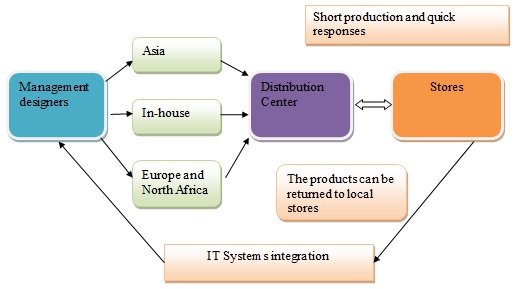
Multiple Collections and Frequent Refreshes:
One of the ways Zara stays ahead of the competition is by introducing new collections frequently throughout the year. Instead of following the traditional fashion calendar which typically features two main seasonal collections per year (Spring/Summer and Fall/Winter), Zara releases several smaller collections throughout the year. These collections often include limited edition pieces designed specifically to appeal to current fashion trends. By offering these exclusive items, Zara encourages shoppers to make repeat visits to their stores to check out the latest arrivals.
In addition to introducing new collections regularly, Zara also updates existing collections frequently. They continuously refine and adjust their offerings based on customer feedback and sales data. If a specific item or color is performing particularly well, Zara will produce additional units to meet demand. Similarly, if an item is not selling as expected, they will discontinue it quickly to prevent further losses. This constant updating keeps customers interested and coming back to see what’s new in stock.
By combining both multiple collections and frequent refreshes, Zara creates a sense of urgency among shoppers to purchase items before they sell out. Customers know that once an item is gone, it might not return again anytime soon. This exclusivity drives sales and helps build brand loyalty. Additionally, it also reduces the risk of overstocking unsold merchandise which could negatively impact profit margins.
Location Strategy:
Zara strategically selects prime retail locations for its physical stores, aiming to position itself in high-traffic areas and fashion capitals around the world. This ensures that Zara stores are easily accessible and visible to a wide range of potential customers, increasing footfall and brand exposure.
Location Strategy:
When selecting locations for new stores, Zara takes a highly analytical approach to determine optimal sites. They consider factors such as population density, traffic patterns, nearby amenities like public transportation, and even weather conditions. By analyzing demographic data and studying local markets, Zara identifies areas most likely to attract their target audience. Once potential locations are identified, Zara conducts extensive research using advanced mapping tools to visualize pedestrian flow and optimize store layouts accordingly.
Store Design:
Zara places great emphasis on creating inviting store environments that encourage browsing and purchases. Stores feature sleek modern interiors with clean lines and minimalist decor. Clothes are displayed neatly but not cramped together, allowing space for customers to easily navigate and touch fabrics. Lighting is carefully calibrated to showcase colors and textures effectively. In addition, Zara incorporates technology seamlessly into their stores via digital displays and interactive kiosks for easy self-checkout options.
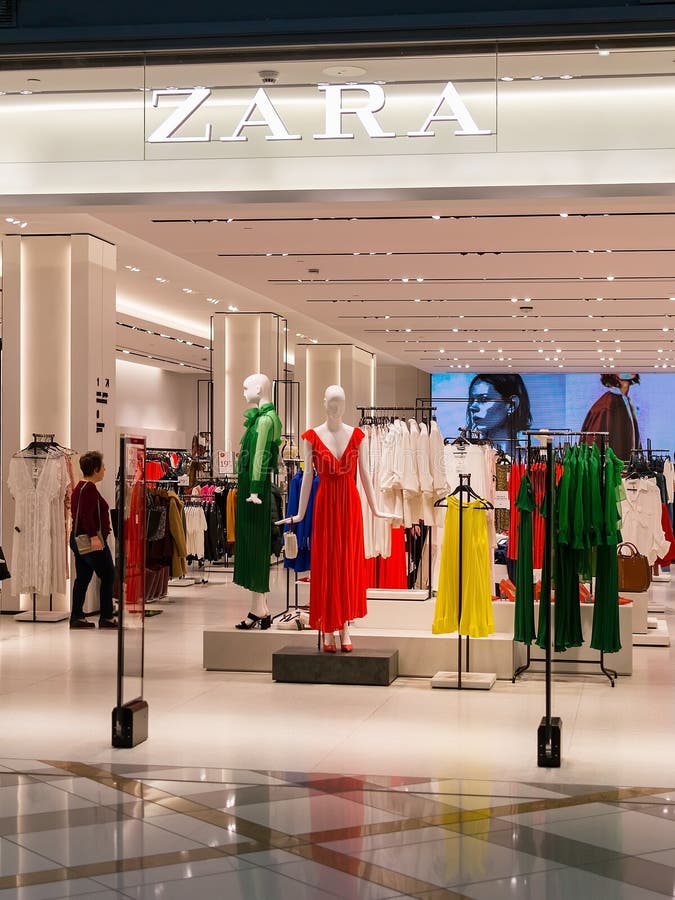
Urbanization Trends:
As urban populations continue to grow globrowth rate of cities worldwide is projected to reach 68% by 2030 according to UN estimates), Zara recognizes the importance of catering to city dwellers seeking stylish yet affordable clothes. By focusing on convenient locations near public transit hubs and dense residential neighborhoods, Zara makes it easier for busy professionals and students alike to access their stores. This approach aligns with broader societal trends towards sustainability and reduced car usage.
Digitalization and E-commerce:
Online Presence:
Zara has a strong online presence through its website and social media channels. The company actively promotes its products through Instagram, Facebook, Twitter, Pinterest, and TikTok. Its website offers detailed descriptions, high-quality images, and videos of each garment, making it easy for customers to explore different styles and designs.
Mobile Applications:
Zara has developed mobile applications for iOS and Android devices that allow users to browse and purchase clothing directly from their smartphones. Users can save favorite items, receive notifications about new arrivals, and track orders.
Omnichannel Approach:
Zara integrates its brick-and-mortar stores with its online platform through its omnichannel approach. For example, customers can order items online and pick up their purchases at a physical store. Conversely, customers can try on items in-store and then complete the transaction online. This allows customers to enjoy the benefits of both online and offline shopping experiences.
Data Analytics:
Zara collects data from its online platforms and physical stores to gain insights into customer behavior and preferences. This enables the company to tailor its marketing campaigns and product offerings to better suit individual needs and interests.
Artificial Intelligence:
Zara utilizes artificial intelligence algorithms to analyze customer data and identify emerging trends. AI systems help predict future demand for certain products and suggest design ideas for new collections.
Virtual Reality Technology:
Zara has experimented with virtual reality technology to provide customers with immersive shopping experiences. Using VR headsets, customers can virtually visit Zara stores and view products in 3D detail.
In 2018, during the height of the technological revolution, the fashion giant introduced an exciting shopping innovation to its customers. The Zara AR (augmented reality) app enables consumers to view products using virtual models adorned in outfits that are available for purchase either through the app itself or in the physical store they are visiting. This novel tool not only enriches the experience on social media platforms but also facilitates the sharing of personalized shopping encounters.
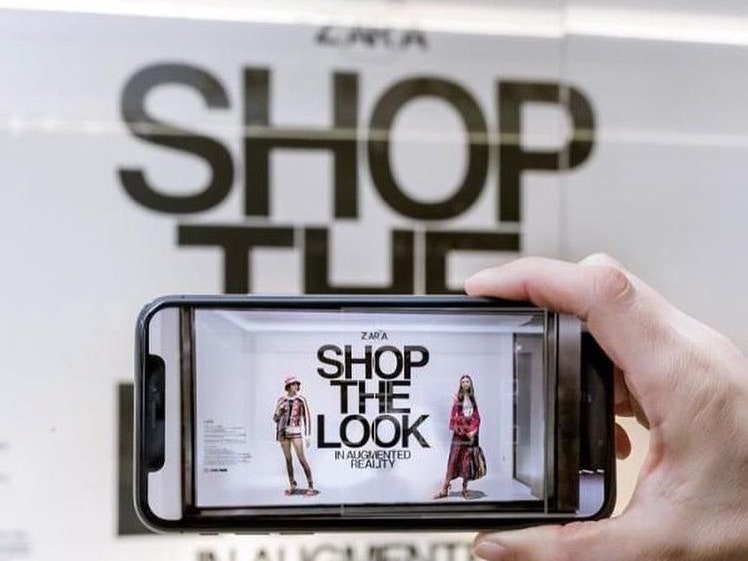
Social Media Marketing:
Zara engages with customers through various social media platforms such as Instagram, where it shares curated looks featuring current fashion trends and influencers wearing Zara pieces. The company also collaborates with popular bloggers and celebrities to promote its products through sponsored posts and partnerships. These strategic moves enable Zara to tap into existing communities and expand its reach beyond traditional advertising methods
Influencer Partnerships:
Collaborations with microinfluencers: Zara works closely with smaller influencers who have significant followings among specific age groups or interest segments (e.g., college students). Microinfluencers often create content showing how they style Zara outfits in everyday situations, highlighting the versatility and wearability of the brand’s clothing line.
For example, Zara took an interesting approach with their influencer marketing on Instagram. They launched a ‘Timeless’ campaign featuring models over the age of 40. It featured fashion industry veterans Malgosia Bela, Yasmin Warsame and Kristina de Coninck. The video campaign involved these women discussing the effect of aging on their personal style. This effort also earned social media praise for the retailer.
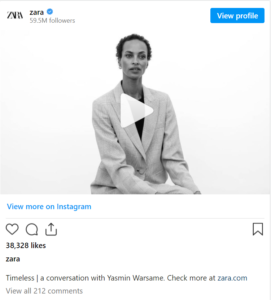
Brand Ambassadors: Zara selects prominent figures from entertainment, sports, and fashion industries to represent the brand as ambassadors. These individuals embody the essence of Zara’s values and appeal to wider audiences through their personal stories and achievements. Their endorsement helps establish trust and credibility in the brand among consumers.
Overall, Zara’s digitalization and e-commerce marketing strategy focuses on providing an accessible, user-friendly experience across multiple channels while leveraging innovative technologies and creative collaborations to enhance brand visibility and loyalty. By embracing these tactics, Zara continues to thrive in today’s fast-paced retail environment.
Limited Discounts and Sales:
Unlike many other retailers, Zara employs a deliberate strategy of limited discounts and sales. By avoiding excessive markdowns, the brand maintains a sense of exclusivity and urgency around its products, encouraging customers to make timely purchases.
Exclusivity:
Zara creates a sense of exclusivity around its limited discounts and sales events. Customers feel privileged when offered special deals or exclusive access to seasonal collections before others. This encourages them to remain loyal to the brand and spread positive word-of-mouth recommendations.
Time-limited Offers:
Zara frequently runs time-sensitive promotions, creating urgency among shoppers to take advantage of temporary price reductions. This tactic drives impulse buying decisions and increases revenue during slow periods or between seasons.
Seasonal Promotions:
Zara capitalizes on major holidays like Black Friday, Cyber Monday, Christmas, New Year’s Day, etc. to launch seasonal sales and discounts. These campaigns attract bargain hunters looking for festive attire or gifts.
Social Media Strategy of Zara
Zara boasts a remarkable presence across various social networks, amassing an impressive following of 59 Million on Instagram, 30 Million on Facebook, and 1.3 Million on Twitter. The brand exhibits vigorous social activity, including daily posts, garnering around 30,000 likes per publication, and sharing insta stories featuring the latest fashion trends.
Zara’s prowess in social media is undoubtedly one of its strengths, as it actively engages with its users on its profiles. Zara captivates a large audience by sharing captivating content. Their robust inbound marketing strategy enables them to circulate photos and videos that spark viral interactions around their products.
The relationship between Zara and its consumers is solid and continuous. There is an uninterrupted flow of communication and interaction between both parties. The brand maintains a steady, daily presence through digital media, ensuring a constant and engaging connection with its audience.
Consistent visual approach
Zara heavily relies on visual elements in its social media strategy. The brand adopts a synchronized layout that prioritizes photo-oriented content across all its social platforms. This strategic visual consistency plays a crucial role in enhancing brand recall, as it allows consumers to associate specific types of content with the brand. By maintaining such uniformity, Zara naturally cultivates a distinct brand identity that deeply connects with its audience.
Organic Growth of Zara
Zara’s social media triumph is significantly influenced by the endorsement it receives from its consumers, particularly fashion-focused influencers and bloggers. Numerous Instagram accounts are solely dedicated to showcasing Zara’s clothing offerings. Each season witnesses a Zara item becoming a trending sensation on social media, and the brand’s hashtags garner millions of results, showcasing the immense popularity and engagement the brand enjoys on these platforms.
From Zara’s brand story, it’s evident that to grow and remain viable in today’s business landscape, every brand needs a good social media marketing strategy.
Zara’s marketing strategies, characterized by its fast-fashion model, agile supply chain, frequent product refreshes, and strong digital presence, have propelled the brand to the forefront of the fashion industry. By staying ahead of fashion trends and responding swiftly to consumer demands, Zara continues to captivate customers and maintain its status as a trendsetter in the ever-evolving fashion landscape.
Marketing Mix of Zara: A Comprehensive Analysis
The marketing mix, also known as the 4Ps (Product, Price, Place, and Promotion), is a fundamental framework that helps businesses like Zara develop effective marketing strategies. Let’s delve into each element of Zara’s marketing mix in detail:
Product: Zara’s product strategy revolves around offering trendy and fashionable apparel and accessories for men, women, and children. The brand is known for its fast-fashion model, which means constantly introducing new collections and designs to align with the latest fashion trends. Key aspects of Zara’s product strategy include:
Wide Product Range: Zara offers a diverse range of clothing styles, from casual wear to formal attire, and from everyday basics to statement pieces.
Constant Renewal: Zara introduces new designs and collections frequently, keeping their stores fresh and enticing for customers.
High-Quality and Affordable: Zara maintains a reputation for delivering reasonably priced products without compromising on quality.
Price: Zara’s pricing strategy focuses on offering affordable and accessible fashion. While the brand is not positioned as a budget retailer, it aims to provide value for money by offering trendy styles at a reasonable price point. Key aspects of Zara’s pricing strategy include:
Competitive Pricing: Zara competitively prices its products in comparison to other fast-fashion retailers.
Dynamic Pricing: The brand might adjust prices based on factors like demand, seasonality, and inventory levels.
Tiered Pricing: Zara offers various product lines at different price points, catering to a wide range of customers.
3. Place (Distribution): Zara’s distribution strategy plays a crucial role in its fast-fashion model, ensuring that its products reach consumers efficiently and quickly. Key aspects of Zara’s distribution strategy include:
Global Presence: Zara has an extensive network of physical stores, strategically located in prime retail locations worldwide. This enables the brand to cater to a diverse international customer base.
Online Retail: Zara has a well-developed e-commerce platform, allowing customers to shop online, ensuring a seamless omnichannel experience.
Responsive Supply Chain: Zara’s vertically integrated supply chain enables rapid production and distribution, reducing lead times and ensuring products reach stores quickly.
4. Promotion: Zara’s promotional strategies focus on creating buzz, generating excitement, and maintaining brand visibility. While the brand relies less on traditional advertising, it leverages other promotional methods effectively. Key aspects of Zara’s promotion strategy include:
Minimal Advertising: Zara spends less on traditional advertising and relies more on word-of-mouth marketing and social media buzz.
In-store Visual Merchandising: Zara invests in visually appealing store displays and window setups to attract customers and showcase new collections.
Social Media and Influencers: Zara actively engages with its customers through social media platforms, collaborating with influencers and fashion bloggers to reach a wider audience.
Limited Sales and Discounts: Zara avoids excessive markdowns and sales, maintaining a sense of exclusivity and urgency for its products.
Zara’s marketing mix revolves around delivering fashionable products at affordable prices, supported by an efficient distribution system and innovative promotional strategies. The brand’s fast-fashion approach, combined with a strong focus on customer preferences, has solidified its position as a leading global fashion retailer and continues to shape the fashion industry’s landscape.
STP Analysis of Zara: Segmenting, Targeting, and Positioning
STP analysis is a fundamental marketing framework used by businesses to understand and develop their market strategy. Let’s explore how Zara applies the STP analysis:
Segmentation
Segmentation involves dividing the market into distinct groups of consumers with similar characteristics, needs, and preferences. Zara employs various segmentation criteria to identify its target customer groups. Some key segments include:
a. Demographic Segmentation: Demographic segmentation divides markets based on variables such as age, sex, education, occupation, ethnicity, religion, family status, and socioeconomic status. Zara employs demographic segmentation to categorize its customers into distinct groups based on shared traits. For instance, Zara may segment its female customers into three primary groups – teens/college students, working professionals, and middle-aged mothers. Within each group, Zara can then tailor its marketing message and product offering to address the unique needs and preferences of each audience.
b. Psychographic Segmentation: Zara appeals to fashion-conscious and trend-oriented consumers who seek stylish and contemporary clothing. The brand targets individuals who are receptive to new fashion trends and value the latest designs.
c. Geographic Segmentation: Geographic segmentation classifies markets based on physical location. Zara takes advantage of geographic segmentation to adapt its marketing efforts to regional differences in taste, climate, cultural norms, and economic conditions. For example, Zara may modify its product lineup to include warmer fabrics or heavier layers for colder climates or incorporate local styles and motifs to appeal to regional preferences. Additionally, Zara often collaborates with local influencers or celebrities to generate buzz around its brand and connect with potential customers in specific regions.
d. Behavioral Segmentation: Zara utilizes behavioral segmentation to understand how customers interact with its brand and make purchase decisions. By analyzing data on customer shopping history, browsing behavior, social media engagement, and other indicators, Zara gains insights into what motivates consumers to buy its products. Based on this information, Zara can develop targeted campaigns and promotional strategies aimed at encouraging repeat business and fostering long-term loyalty among its customer base.
Targeting
After segmenting the market, Zara identifies specific target segments that align with its brand identity and objectives. The brand has a broad target audience, but some primary target segments include:
a. Trendsetters and Fashion Enthusiasts: Zara targets individuals who actively seek out the latest fashion trends and value staying ahead in the fashion game.
b. Urban Dwellers and Fashion-Forward Consumers: Zara appeals to people living in urban areas who are exposed to diverse fashion influences and seek trendy clothing options.
c. Value-Conscious Fashionistas: Zara attracts consumers who desire fashionable clothing at affordable prices, appreciating the value proposition offered by the brand.
Positioning
Positioning involves establishing a distinct and desirable image of the brand in the minds of consumers compared to competitors. Zara positions itself as a fast-fashion pioneer and a trendsetting brand that offers stylish clothing at accessible prices. Key elements of Zara’s positioning include:
a. Fast Fashion Leader: Zara’s rapid response to fashion trends and ability to swiftly produce and deliver new designs position it as a leader in the fast-fashion segment.
b. High Fashion at Affordable Prices: Zara creates an impression of high fashion and style while keeping its prices reasonable, attracting customers looking for trendy apparel without breaking the bank.
c. Global Fashion Icon: With a widespread global presence, Zara positions itself as a fashion icon accessible to customers worldwide, regardless of their location.
d. Constant Product Refreshes: Zara’s frequent product updates and new collections reinforce its image as a dynamic and ever-evolving brand, encouraging customer engagement and repeat purchases.
Zara’s STP analysis underscores its effectiveness in segmenting the market, targeting specific consumer groups, and positioning itself as a leading fast-fashion brand. By catering to the needs and preferences of its diverse target segments and continually refreshing its product offerings, Zara has solidified its position as a trendsetter in the global fashion industry.
Also Read: Elevating Luxury: Exploring Marketing Strategies of Louis Vuitton
To read more content like this, subscribe to our newsletter
